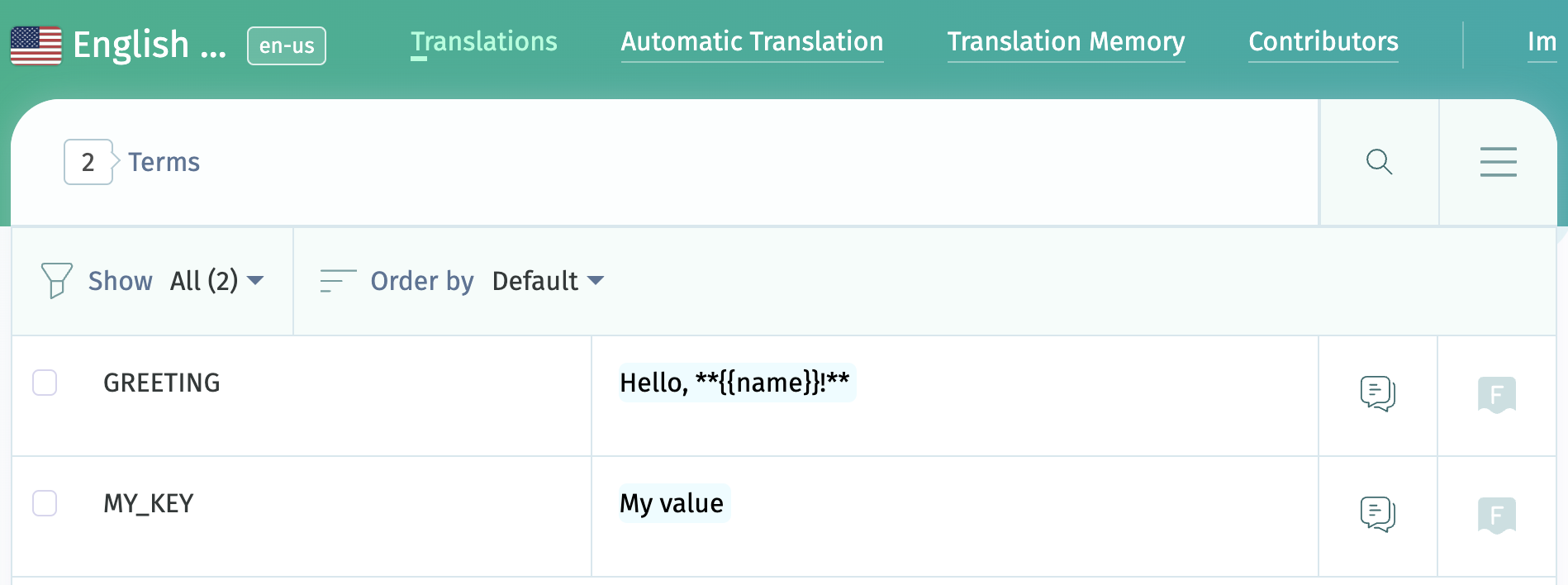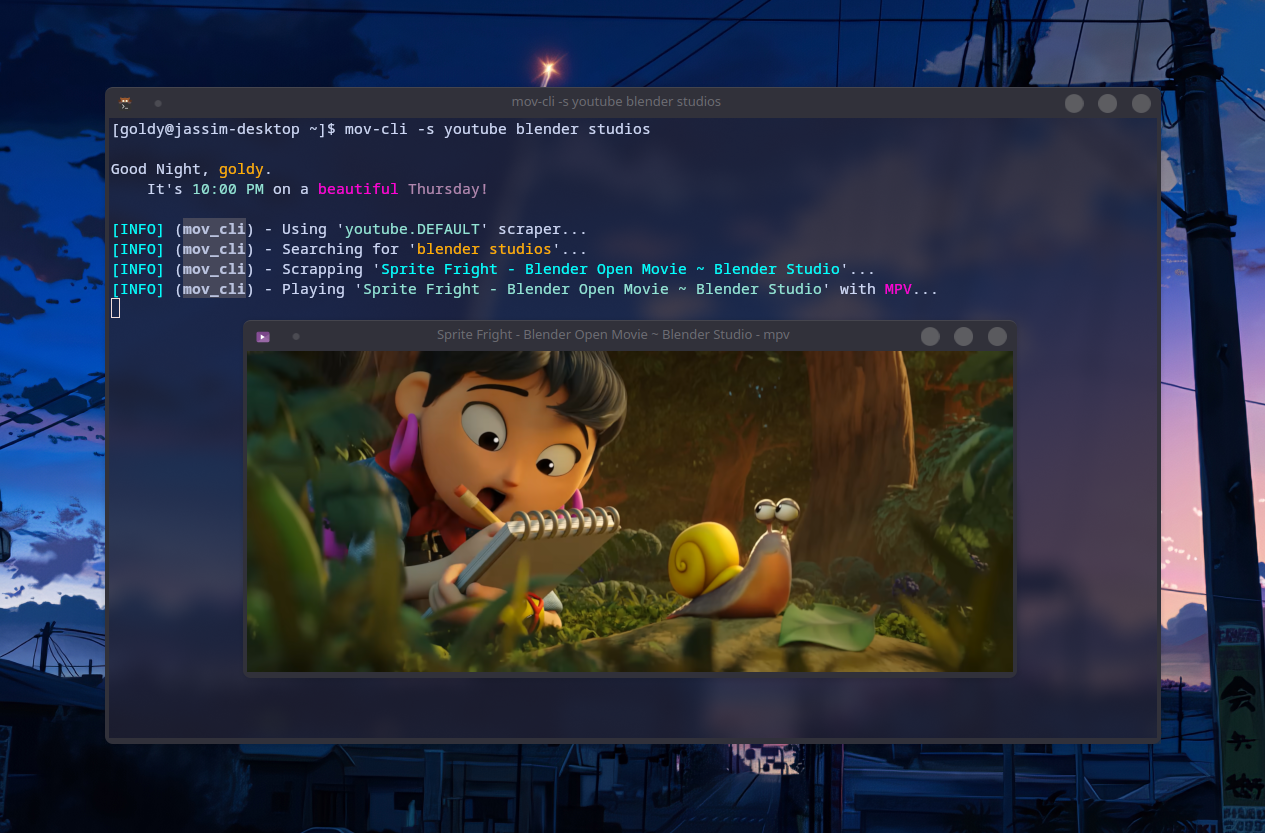

程序下载 · 部署教程 · 使用教程 · 意见反馈 · 在线演示
Note:官方部署站 https://msgpusher.com 现已上线,当前开放注册,欢迎使用。如果收到积极反馈未来可以考虑换用延迟更低的服务器。
Warning:从
v0.3版本升级到v0.4版本需要手动迁移数据库,具体方法见迁移数据库。
- 多种消息推送方式:
- 支持自定义 Webhook,反向适配各种调用平台,你可以接入各种已有的系统,而无需修改其代码。
- 支持在 Web 端编辑 & 管理发送的消息,新消息发送后 Web 端即时刷新。
- 支持异步消息发送。
- 支持用户管理,支持多种用户登录注册方式:
- 邮箱登录注册以及通过邮箱进行密码重置。
- GitHub 开放授权。
- 微信公众号授权(需要额外部署 WeChat Server)。
- 支持 Markdown。
- 支持 Cloudflare Turnstile 用户校验。
- 支持在线发布公告,设置关于界面以及页脚。
- API 兼容其他消息推送服务,例如 Server 酱。
- 整合进自己的博客系统,每当有人登录时发微信消息提醒。
- 在进行深度学习模型训练时,在每个 epoch 结束后将关键数据发送到微信以方便及时监控。
- 在各种脚本运行结束后发消息提醒,例如监控 GitHub Star 数量的脚本,又例如自动健康填报的脚本,用来通知运行结果。
- 为其他系统提供消息推送功能。
部署:docker run -d --restart always --name message-pusher -p 3000:3000 -e TZ=Asia/Shanghai -v /home/ubuntu/data/message-pusher:/data justsong/message-pusher
如果无法拉去,请将 justsong/message-pusher 替换为 ghcr.io/songquanpeng/message-pusher。
更新:docker run --rm -v /var/run/docker.sock:/var/run/docker.sock containrrr/watchtower -cR
开放的端口号为 3000,之后用 Nginx 配置域名,反代以及 SSL 证书即可,具体参考详细部署教程。
数据将会保存在宿主机的 /home/ubuntu/data/message-pusher 目录(只有一个 SQLite 数据库文件),请确保该目录存在且具有写入权限,或者更改为合适的目录。
Nginx 的参考配置:
server{
server_name msgpusher.com; # 请根据实际情况修改你的域名
location / {
client_max_body_size 64m;
proxy_http_version 1.1;
proxy_pass http://localhost:3000; # 请根据实际情况修改你的端口
proxy_set_header Host $host;
proxy_set_header X-Forwarded-For $remote_addr;
proxy_cache_bypass $http_upgrade;
proxy_set_header Accept-Encoding gzip;
}
}
之后使用 Let’s Encrypt 的 certbot 配置 HTTPS:
# Ubuntu 安装 certbot:
sudo snap install --classic certbot
sudo ln -s /snap/bin/certbot /usr/bin/certbot
# 生成证书 & 修改 Nginx 配置
sudo certbot --nginx
# 根据指示进行操作
# 重启 Nginx
sudo service nginx restart- 从 GitHub Releases 下载可执行文件或者从源码编译:
git clone https://github.com/songquanpeng/message-pusher.git cd message-pusher/web npm install npm run build cd .. go mod download go build -ldflags "-s -w" -o message-pusher
- 运行:
chmod u+x message-pusher ./message-pusher --port 3000 --log-dir ./logs
- 访问 http://localhost:3000/ 并登录。初始账号用户名为
root,密码为123456。
如果服务需要长久运行,只是单纯地启动是不够的,详细部署教程。
如果需要使用 WebSocket 客户端推送功能,则 Nginx 的配置文件中 proxy_read_timeout 和 proxy_send_timeout 务必设置超过 1 分钟。
推荐设置:
proxy_read_timeout 300s;
proxy_send_timeout 300s;
系统本身仅需要下载一个可执行文件即可开始使用,无其他依赖。
你可以通过设置环境变量或者命令行参数进行配置。
等到系统启动后,使用 root 用户登录系统并做进一步的配置,默认密码为 123456。
REDIS_CONN_STRING:设置之后将使用 Redis 作为请求频率限制的存储,而非使用内存存储。- 例子:
REDIS_CONN_STRING=redis://default:redispw@localhost:49153
- 例子:
SESSION_SECRET:设置之后将使用固定的会话密钥,这样系统重新启动后已登录用户的 cookie 将依旧有效。- 例子:
SESSION_SECRET=random_string
- 例子:
SQL_DSN:设置之后将使用指定数据库而非 SQLite。- 例子:
SQL_DSN=root:123456@tcp(localhost:3306)/message-pusher
- 例子:
注意:使用 Docker 部署时,请使用 -e key=value 设置环境变量。
例子:docker run -e SESSION_SECRET=random_string ...
--port <port_number>: 指定服务器监听的端口号,默认为3000。- 例子:
--port 3000
- 例子:
--log-dir <log_dir>: 指定日志文件夹,如果没有设置,日志将不会被保存。- 例子:
--log-dir ./logs
- 例子:
--version: 打印系统版本号并退出。
- 系统设置:
- 填写服务器地址。
- 配置登录注册选项,如果系统不对外开放,请取消选择
允许新用户注册。 - 配置 SMTP 服务,可以使用 QQ 邮箱的 SMTP 服务。
- 其他配置可选,请按照页面上的指示完成配置。
- 个人设置:
- 点击
更新用户信息更改默认用户名和密码。 - 点击
绑定邮箱地址绑定邮箱以启用邮件消息推送方式。
- 点击
- 推送设置:
- 设置
默认推送方式,默认为通过邮件进行推送。 - 设置
推送 token,用以推送 API 调用鉴权,如果不需要留空即可。 - 设置其他推送方式,按照页面上的指示即可,完成配置后点击对应的
测试按钮即可测试配置是否成功。
- 设置
- 其他设置:如果系统对外提供服务,本系统也提供了一定的个性化设置功能,你可以设置关于界面和页脚,以及发布公告。
- 消息推送 API URL:
https://<domain>/push/<username>- 将上面的
<domain>以及<username>替换为真实值,例如:https://push.mydomain.cn/push/admin
- 将上面的
GET请求方式:https://<domain>/push/<username>?title=<标题>&description=<描述>&content=<Markdown 文本>&channel=<推送方式>&token=<推送 token>title:选填,受限于具体的消息推送方式,其可能被忽略。description:必填,可以替换为desp。content:选填,受限于具体的消息推送方式,Markdown 语法的支持有所区别。channel:选填,如果不填则系统使用你在后台设置的默认推送通道。注意,此处填的是消息通道的名称,而非类型。可选的推送通道类型有:email:通过发送邮件的方式进行推送(使用title或description字段设置邮件主题,使用content字段设置正文,支持完整的 Markdown 语法)。test:通过微信测试号进行推送(使用description字段设置模板消息内容,不支持 Markdown)。corp_app:通过企业微信应用号进行推送(仅当使用企业微信 APP 时,如果设置了content字段,title和description字段会被忽略;使用微信中的企业微信插件时正常)。lark_app:通过飞书自建应用进行推送。corp:通过企业微信群机器人推送(设置content字段则将渲染 Markdown 消息,支持 Markdown 的子集;设置description字段则为普通文本消息)。lark:通过飞书群机器人进行推送(注意事项同上)。ding:通过钉钉群机器人进行推送(注意事项同上)。bark:通过 Bark 进行推送(支持title和description字段)。client:通过 WebSocket 客户端进行推送(支持title和description字段)。telegram:通过 Telegram 机器人进行推送(description或content字段二选一,支持 Markdown 的子集)。discord:通过 Discord 群机器人进行推送(注意事项同上)。one_api:通过 OneAPI 协议推送消息到 QQ。group:通过预先配置的消息推送通道群组进行推送。custom:通过预先配置好的自定义推送通道进行推送。tencent_alarm:通过腾讯云监控告警进行推送,仅支持description字段。none:仅保存到数据库,不做推送。
token:如果你在后台设置了推送 token,则此项必填。另外可以通过设置 HTTPAuthorization头部设置此项。- 注意令牌有两种,一种是全局鉴权令牌,一种是通道维度的令牌,前者可以鉴权任何通道,后者只能鉴权指定通道。
url:选填,如果不填则系统自动为消息生成 URL,其内容为消息详情。to:选填,推送给指定用户,如果不填则默认推送给自己,受限于具体的消息推送方式,有些推送方式不支持此项。@all:推送给所有用户。user1|user2|user3:推送给多个用户,用户之间使用|分隔。
async:选填,如果设置为true则消息推送将在后台异步进行,返回结果包含uuid字段,可用于后续[获取消息发送状态](./docs/API.md#通过消息 UUID 获取消息发送状态)。render_mode:选填,- 如果设置为
code,则消息体会被自动嵌套在代码块中进行渲染; - 如果设置为
raw,则不进行 Markdown 解析; - 默认
markdown,即进行 Markdown 解析。
- 如果设置为
POST请求方式:字段与上面GET请求方式保持一致。- 如果发送的是 JSON,HTTP Header
Content-Type请务必设置为application/json,否则一律按 Form 处理。 - POST 请求方式下的
token字段也可以通过 URL 查询参数进行设置。
- 如果发送的是 JSON,HTTP Header
各种通道的支持程度:
| 通道类型 | title |
description |
content |
url |
to |
Markdown 支持 |
|---|---|---|---|---|---|---|
email |
✅ | ✅ | ✅ | ❌ | ✅️ | ✅️ |
test |
✅ | ✅ | ✅ | ✅️ | ✅️ | ✅ |
corp_app |
✅ | ✅ | ✅ | ✅️ | ✅ | ✅ |
corp |
❌ | ✅ | ✅ | ✅️ | ✅️ | ✅ |
lark |
❌ | ✅ | ✅ | ❌ | ✅ | ✅ |
lark_app |
❌ | ✅ | ✅ | ❌️ | ✅ | ✅ |
ding |
✅ | ✅ | ✅ | ✅️ | ✅ | ✅ |
bark |
✅ | ✅ | ✅ | ✅️ | ❌ | ✅ |
client |
✅ | ✅ | ❌ | ❌ | ❌ | ❌ |
telegram |
❌ | ❌ | ✅ | ❌ | ✅ | ✅ |
discord |
❌ | ❌ | ✅ | ❌ | ✅ | ❌ |
tencent_alarm |
❌ | ✅ | ❌ | ❌ | ❌ | ❌ |
注意:
- 对于大部分通道,
description字段和content是不能同时存在的,如果你只需要文字消息,请使用description字段,如果你需要发送 Markdown 消息,请使用content字段。 - 部分通道的 Markdown 支持实际上是通过 URL 跳转到本系统所渲染的消息详情实现的,其他通道的 Markdown 支持受限于具体的通道,支持的语法并不统一。
示例:
Bash 示例
#!/bin/bash
MESSAGE_PUSHER_SERVER="https://msgpusher.com"
MESSAGE_PUSHER_USERNAME="test"
MESSAGE_PUSHER_TOKEN="666"
function send_message {
# POST Form
curl -s -X POST "$MESSAGE_PUSHER_SERVER/push/$MESSAGE_PUSHER_USERNAME" \
-d "title=$1&description=$2&content=$3&token=$MESSAGE_PUSHER_TOKEN" \
>/dev/null
}
function send_message_with_json {
# POST JSON
curl -s -X POST "$MESSAGE_PUSHER_SERVER/push/$MESSAGE_PUSHER_USERNAME" \
-H 'Content-Type: application/json' \
-d '{"title":"'"$1"'","desp":"'"$2"'", "content":"'"$3"'", "token":"'"$MESSAGE_PUSHER_TOKEN"'"}' \
>/dev/null
}
send_message 'title' 'description' 'content'另一个版本:
MESSAGE_PUSHER_SERVER="https://msgpusher.com"
MESSAGE_PUSHER_USERNAME="test"
MESSAGE_PUSHER_TOKEN="666"
MESSAGE_PUSHER_CHANNEL="lark"
sendmsg() {
if [ -t 0 ]; then
local param="$*"
else
local param=$(</dev/stdin)
fi
curl -s -o /dev/null --get --data-urlencode "content=${param}" "$MESSAGE_PUSHER_SERVER/push/$MESSAGE_PUSHER_USERNAME?channel=$MESSAGE_PUSHER_CHANNEL&token=$MESSAGE_PUSHER_TOKEN"
}之后便可以进行这样的操作:
uname -ra | sendmsgPython 示例
import requests
SERVER = "https://msgpusher.com"
USERNAME = "test"
TOKEN = "666"
def send_message(title, description, content):
# GET 方式
# res = requests.get(f"{SERVER}/push/{USERNAME}?title={title}"
# f"&description={description}&content={content}&token={TOKEN}")
# POST 方式
res = requests.post(f"{SERVER}/push/{USERNAME}", json={
"title": title,
"description": description,
"content": content,
"token": TOKEN
})
res = res.json()
if res["success"]:
return None
else:
return res["message"]
error = send_message("标题", "描述", "**Markdown 内容**")
if error:
print(error)Go 示例
package main
import (
"bytes"
"encoding/json"
"errors"
"fmt"
"net/http"
"net/url"
)
var serverAddress = "https://msgpusher.com"
var username = "test"
var token = "666"
type request struct {
Title string `json:"title"`
Description string `json:"description"`
Content string `json:"content"`
URL string `json:"url"`
Channel string `json:"channel"`
Token string `json:"token"`
}
type response struct {
Success bool `json:"success"`
Message string `json:"message"`
}
func SendMessage(title string, description string, content string) error {
req := request{
Title: title,
Description: description,
Content: content,
Token: token,
}
data, err := json.Marshal(req)
if err != nil {
return err
}
resp, err := http.Post(fmt.Sprintf("%s/push/%s", serverAddress, username),
"application/json", bytes.NewBuffer(data))
if err != nil {
return err
}
var res response
err = json.NewDecoder(resp.Body).Decode(&res)
if err != nil {
return err
}
if !res.Success {
return errors.New(res.Message)
}
return nil
}
func SendMessageWithForm(title string, description string, content string) error {
resp, err := http.PostForm(fmt.Sprintf("%s/push/%s", serverAddress, username),
url.Values{"title": {title}, "description": {description}, "content": {content}, "token": {token}})
if err != nil {
return err
}
var res response
err = json.NewDecoder(resp.Body).Decode(&res)
if err != nil {
return err
}
if !res.Success {
return errors.New(res.Message)
}
return nil
}
func main() {
//err := SendMessage("标题", "描述", "**Markdown 内容**")
err := SendMessageWithForm("标题", "描述", "**Markdown 内容**")
if err != nil {
fmt.Println("推送失败:" + err.Error())
} else {
fmt.Println("推送成功!")
}
}C# 示例
using Newtonsoft.Json;
using RestSharp;
namespace Demo
{
public class Program
{
public static void Main(string[] args)
{
//推送消息
var sendMsg = MessagePusherTool.SendMessage("标题", "描述", "**Markdown 内容**");
if(sendMsg.Success)
{
Console.WriteLine($"推送成功!");
}
else
{
Console.WriteLine($"推送失败:{sendMsg.Message}");
}
}
}
/// <summary>
/// 消息推送工具
///
/// <para>开源地址:https://github.com/songquanpeng/message-pusher</para>
/// <para>支持:Framework、Net3.1、Net5、Net6</para>
/// <para>引用包:</para>
/// <para>dotnet add package Newtonsoft.Json -v 13.0.2</para>
/// <para>dotnet add package RestSharp -v 108.0.3</para>
/// </summary>
public class MessagePusherTool
{
/// <summary>
/// ServerAddress
/// </summary>
public const string ServerAddress = "https://msgpusher.com";
/// <summary>
/// UserName
/// </summary>
public const string UserName = "test";
/// <summary>
/// Token
/// </summary>
public const string Token = "666";
/// <summary>
/// SendMessage
/// </summary>
/// <param name="title">title</param>
/// <param name="description">description</param>
/// <param name="content">content</param>
public static Response SendMessage(string title, string description, string content)
{
var requestData = new Request()
{
Title = title,
Description = description,
Content = content,
Token = Token,
};
var url = $"{ServerAddress}";
var client = new RestClient(url);
var request = new RestRequest($"push/{UserName}", Method.Post);
request.AddJsonBody(requestData);
var response = client.Execute(request);
var responseData = response.Content;
var responseJson = JsonConvert.DeserializeObject<Response>(responseData);
return responseJson;
}
/// <summary>
/// Request
/// </summary>
public class Request
{
/// <summary>
/// Title
/// </summary>
[JsonProperty(PropertyName = "title")]
public string Title { get; set; }
/// <summary>
/// Description
/// </summary>
[JsonProperty(PropertyName = "description")]
public string Description { get; set; }
/// <summary>
/// Content
/// </summary>
[JsonProperty(PropertyName = "content")]
public string Content { get; set; }
/// <summary>
/// URL
/// </summary>
[JsonProperty(PropertyName = "url")]
public string URL { get; set; }
/// <summary>
/// Channel
/// </summary>
[JsonProperty(PropertyName = "channel")]
public string Channel { get; set; }
/// <summary>
/// Token
/// </summary>
[JsonProperty(PropertyName = "token")]
public string Token { get; set; }
}
/// <summary>
/// Response
/// </summary>
public class Response
{
/// <summary>
/// Success
/// </summary>
[JsonProperty(PropertyName = "success")]
public bool Success { get; set; }
/// <summary>
/// Message
/// </summary>
[JsonProperty(PropertyName = "message")]
public string Message { get; set; }
}
}
}Node.js 示例
const axios = require('axios');
const querystring = require('querystring');
const MESSAGE_PUSHER_SERVER = 'https://msgpusher.com'
const MESSAGE_PUSHER_USERNAME = 'test'
const MESSAGE_PUSHER_TOKEN = '666'
async function send_message(title, description, content) {
try {
const postData = querystring.stringify({
title: title,
desp: description,
content: content,
token: MESSAGE_PUSHER_TOKEN,
})
const response = await axios.post(`${MESSAGE_PUSHER_SERVER}/push/${MESSAGE_PUSHER_USERNAME}`, postData, {
headers: {
'Content-Type': 'application/x-www-form-urlencoded',
},
})
if (response.data.success) {
return response.data
}
} catch (error) {
if (error.response) {
return error.response.data
} else {
throw error
}
}
}
send_message('标题', '描述', '**Markdown 内容**')
.then((response) => {
if (response.success) {
console.log('推送成功:', response)
} else {
console.log('推送失败:', response)
}
}, (error) => {
console.log(error.message);
})欢迎 PR 添加更多语言的示例。
此处均以 SQLite 为例,其他数据库请自行修改。我已经让 ChatGPT 翻译成对应的 SQL 版本,见 bin 文件夹,供参考。
- 首先备份你的数据库文件。
- 下载最新的
v0.4版本,启动程序,程序会自动进行数据库表结构的迁移。 - 终止程序。
- 之后执行脚本:
./bin/migrate_v3_to_v4.py,进行数据的迁移。 - 重新启动程序即可。
注意,执行前请确保数据库中 users 表中字段的顺序和脚本中的一致,否则会出现数据错乱的情况。
 https://github.com/songquanpeng/message-pusher
https://github.com/songquanpeng/message-pusher














{ "Websites": { "Example Site": "https://example.com" }, "Facebook Groups": { "Example Group": "https://facebook.com/groups/example" } }